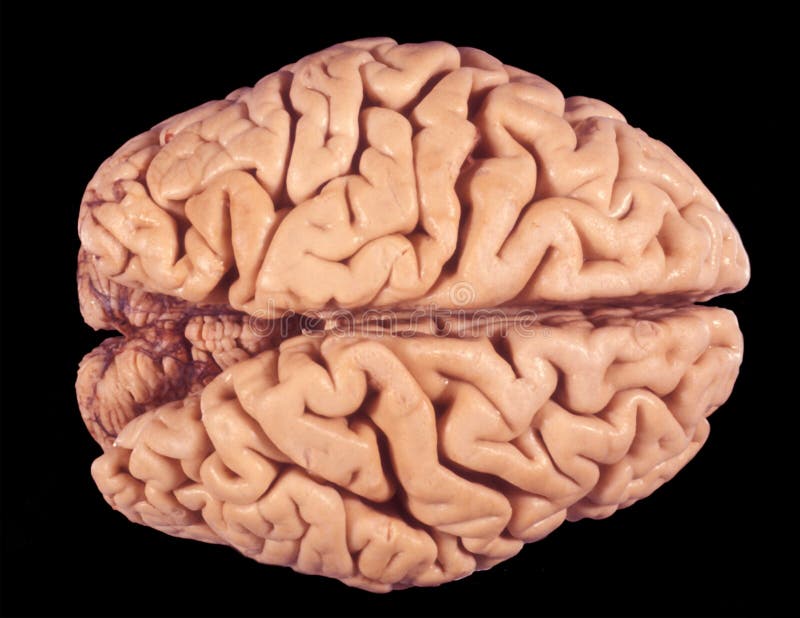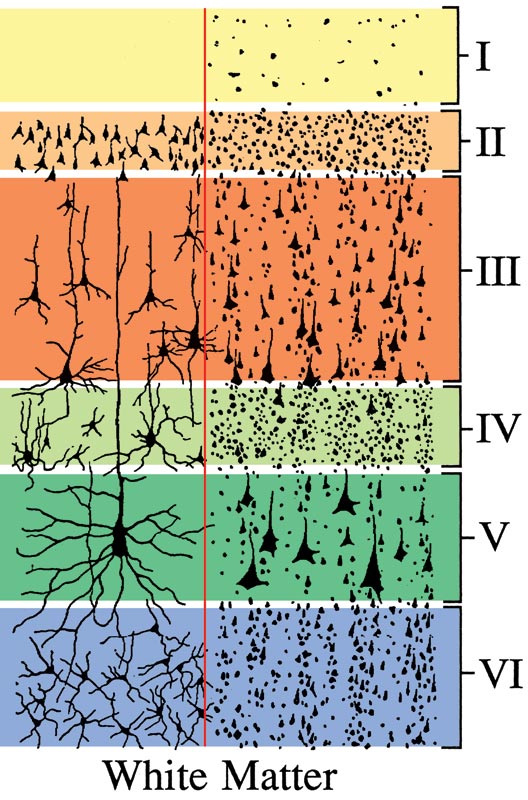Unveiling the neocortex
 zainab muhammad Tukur
zainab muhammad Tukur
CONTENTS:
INTRODUCTION
WHAT IS THE NEOCORTEX?
WHAT IS THE STRUCTURE OF THE NEOCORTEX?
LAYERS OF THE NEOCORTEX:
Layer I (Molecular Layer)
Layer II (External Granular Layer)
Layer III (External Pyramidal Layer)
Layer IV (Internal Granular Layer)
Layer V (Internal Pyramidal Layer)
Layer VI (Multiform Layer)
FUNCTION OF THE NEOCORTEX:
Frontal lobe
Parietal lobe
Occipital lobe
Temporal lobe
CONCLUSION
INTRODUCTION :
The human brain is an astonishing organ, capable of remarkable feats of learning, memory, and creativity. At the heart of these capabilities lies the neocortex, a relatively recent evolutionary developments that sets humans apart from most other species. The neocortex is a hub of intelligence, controlling everything from sensory perception to decision making. Let’s delve into what makes the neocortex so special.
WHAT IS THE NEOCORTEX:

The neocortex is a part of the human cerebral cortex where higher cognitive functioning is thought to originate from. Due to the natural grooves and ridges in the brain, the neocortex is comprised of four main lobes with specific functions.
The neocortex constitutes the largest portion of the cerebral cortex and makes up approximately half volume of the human brain. It is believed to play a key role in the neural processes involved in thought, perception and episodic memory. Structural similarity exists across the entire neocortex. However, research shows that specific functions are localized to distinct areas.
This localization has been characterized based on a number of factors, including cytoarchitecture, input and output connectivity, proportion of cell types, modular structure, and micro-circuitry.
STRUCTURE OF THE NEOCORTEX:

The human brain stands out from the brain of other animals and even mammals, due to its comparatively larger size and dominance of the neocortex. Researchers divide the neocortex into smaller cortical areas that are often referred to as “the organ of the brain”.
The neocortex is essentially a thin sheet of tissue with a large surface area, though its thickness can vary across regions. It is composed of six distinct layers: one layer primarily made up of axon terminals and apical dendrites from cortical neurons, along with five layers containing various types of nerve cells. Remarkably, a single hemisphere of the neocortex is estimated to contain around 8 billion neurons.
LAYERS OF THE NEOCORTEX:

The neocortex is organized into six distinct layers, each with specific types of neurons and functions. These layers are stacked from the outermost surface (Layer I) inward (Layer VI):
Layer I (Molecular Layer):
Contains a very small number of neurons
Plays a role in communication between different parts of the cortex
Layer II (External Granular Layer):
Contains small pyramidal and stellate (granule) cells.
Involved in local cortical processing.
Layer III (External Pyramidal Layer):
Contains medium-sized pyramidal neurons.
Sends signals to other parts of the cortex and across hemispheres.
Layer IV (Internal Granular Layer):
Rich in stellate cells.
Receives input from the thalamus and is prominent in sensory areas.
Layer V (Internal Pyramidal Layer):
Contains large pyramidal neurons, including Betz cells.
Sends outputs to the brainstem and spinal cord, important for motor control.
Layer VI (Multiform Layer):
A mix of various neuron types.
Sends outputs to the thalamus and helps regulate sensory input.
Each layer is characterized by neuronal shapes, density, sizes and organization of nerves fibers. Together they allow the neocortex to process complex information, supporting perception, movement, memory and higher cognitive functions.
FUNCTION OF THE NEOCORTEX:

The neocortex comprises of four regions based on the patterns of sulci (grooves) and gyri (ridges) in the brain: frontal, parietal, occipital, and temporal lobes. Studies on the brain function indicate that each region of the neocortex serves distinct and specialized roles.
Frontal lobe:
The frontal lobe is the largest of the four main lobes of the brain and is located at the front part of each cerebral hemisphere, right behind the forehead. In this region of the neocortex is the human executive function that manages the intricacies of multiples complex processes such as decision making, behavior, and reinforcement learning to name a few.
Parietal lobe:
The parietal lobe is located near the upper back of the skull, behind the frontal lobe and above the occipital lobe. It plays a role in numerical cognition, processing of sensory information, and spatial awareness.
Occipital lobe:
The occipital lobe is responsible for visual function and is the bulge seen at the back of the brain. Is host primary area for visual perception which is closely surrounded by the visual association area.
Temporal lobe:
The temporal lobe houses the hippocampus and the amygdala. Among it functions are emotion, helps in processing sensory information, and derive language and meaningful memories.
CONCLUSION :
The neocortex is what makes the human brain so unique. It helps us think, learn, remember, speak, and understand others. From solving problems to enjoying a story, it’s always working behind the scenes. With its layered structure and specialized areas, the neocortex shapes how we see the world and who we are. The more we learn about it, the more amazing the brain becomes
Subscribe to my newsletter
Read articles from zainab muhammad Tukur directly inside your inbox. Subscribe to the newsletter, and don't miss out.
Written by

zainab muhammad Tukur
zainab muhammad Tukur
Love with Neurosciences 🧠